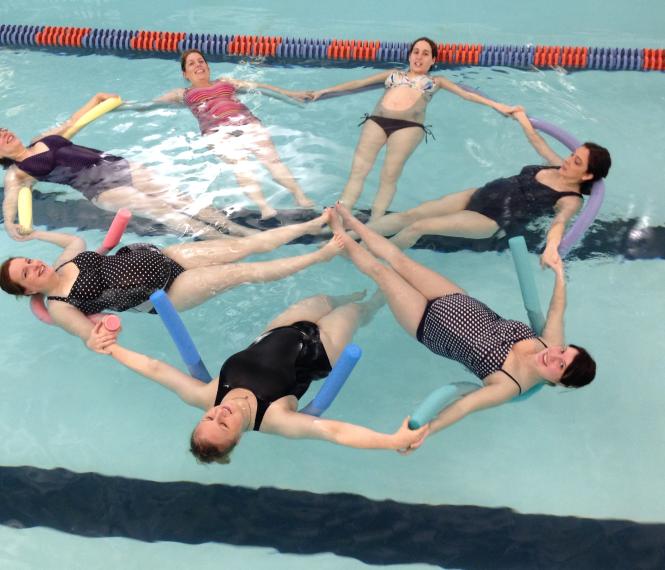Very First Exercises after Baby
Congratulations, the little bundle has arrived! Depending on how your labour and delivery went, you may feel like you’re ready to start adding a little movement back into your routine but it’s important to start off slow and steady.
First and foremost – listen to your body. If you feel exhausted, it’s because you are, so take that cue to rest when needed. Same goes for any pain or soreness. Never fight through anything that hurts, even if it’s only a little, and be especially mindful in the very beginning. THERE IS NO GAIN WITH PAIN!
Before we dive into some starter exercises, which can be done as soon as a day or two after birth, let’s do a quick run-down on what we mean by “your core”.
Our abdominal muscles can be divided into two categories: inner and outer. Your outer muscles include your obliques, responsible for rotation and lateral movements, and your rectus abdominus, or “6-pack” muscle (this is the one that separates during pregnancy), which is responsible for forward flexion.
Your inner (or deep) core consists of your multifidus, transverse abdominus (TVA), diaphragm and pelvic floor (PF). The latter three work together and form the “core canister”: diaphragm at the top, TVA around the middle and PF at the bottom. When you inhale, diaphragm pushes down on the pressure system causing TVA (i.e. your belly) to naturally expand and pelvic floor to relax. On the exhale, PF can find the space to “engage” as diaphragm goes back up and TVA tightens.
By focusing on these deep core muscles, you can work to make your body stronger from the inside out, aiding in postpartum recovery and the general demands of parenthood.
- Diaphragmic Breathing- a key deep core exercise
From a comfortable position, begin to take some slow, deep, mindful breaths. When you inhale, keep your shoulders relaxed and allow your belly to expand. Try to avoid expanding too much into the ribcage. On the exhale, imagine your middle tightening, like a corset, to push the air back out. Repeat 10 to 15 times.
Pelvic Floor – what it is and how to strengthen it.
Your PF is the muscle that attaches to each side of your pelvis, pubic bone and coccyx (tail bone); it functions as a hammock, holding in organs such as the uterus and bladder. If you’re not sure how to locate it, think of the muscles you would use to stop the flow of urine or the passing of gas.
Pelvic floor exercises to try:
- Blueberry Lifts
Sitting or lying comfortably, with the spine and pelvis in a neutral position and shoulders relaxed, take a few breaths and allow the PF to feel relaxed. On an exhale, engage or “lift” the pelvic floor. Imagine you’re gently squeezing a blueberry up (enough to hold it but not squish it). Use the inhale and following breath or two if needed, to bring the PF back to a relaxed position. Repeat 10 – 15 times.
- Pelvic Floor Relaxation
Knowing how to relax the PF can be just as important as engaging it (imagine walking around with your bicep engaged all day, it would not feel great!). This exercise can be done seated or lying down but is ideally done in a lying position with the legs resting on a couch or coffee table. Take a few breaths to connect with the core and pelvic floor. On an inhale, focus on “opening” the pelvic floor. This should feel like a very gentle bearing down. On the exhale, do nothing. You may feel a slight, natural recoil of the PF, but it’s also ok if you don’t. Repeat 10 to 15 times.
Once you get a hang of these exercises on their own, you can work towards combining them by purposefully engaging or relaxing pelvic floor on those deep, diaphragmic breaths. You can also combine these exercises with some short walks if you’re feeling up to it.
REMEMBER: There’s no rush to “get back at it” but these simple, no-impact exercises will help to strengthen the core and reestablish the mind-core connection. And when you’re ready to add a little more strength and cardio training into your routine, you can join us safely at most of our postnatal classes.
Want to work on or learn more about the mind-core connection after baby? Join us at Postnatal Core Restore, a class geared toward easing new moms back into a fitness routine with a special focus on strengthening the core and pelvic floor muscles.
Best wishes on your postnatal recovery and return to joyful movement. We hope to see you and baby soon!
Ashley, Fit Together instructor


